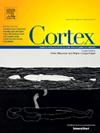Modulation of ventral premotor and primary motor cortex interactions for accurate visuomotor force control
IF 3.2
2区 心理学
Q1 BEHAVIORAL SCIENCES
引用次数: 0
Abstract
Visually guided movements are mediated by visuomotor networks involving multiple cortical areas. While processing in the occipital-parietal-premotor pathway is relatively well understood, the mechanisms by which motor-related frontal and prefrontal regions influence the primary motor cortex (M1), which controls the moving hand during visuomotor tasks, remain unclear. Using dual-site transcranial magnetic stimulation, here we investigated interhemispheric influences from the right M1, dorsal premotor cortex (PMd), ventral premotor cortex (PMv), supplementary motor area (SMA), and dorsolateral prefrontal cortex (DLPFC) on the left M1 during a visuomotor force control task with the right hand, examining how these influences change with enhanced visuomotor performance. Performance (i.e., amount of error) was manipulated by adjusting the visual gain of force feedback. Higher visual gain increases sensitivity to visual feedback, amplifying small force variations and improving error correction, which in turn reduces performance error. Performance enhancement was accompanied by a reduction in the facilitatory influence of the PMv on the contralateral M1. The M1 and DLPFC exerted an inhibitory influence on the contralateral M1 regardless of performance level. The PMd and SMA exerted neither facilitatory nor inhibitory influence on the contralateral M1. These findings suggest distinct modulation patterns of the M1 by different frontal cortical areas and underscore the critical importance of the PMv-M1 interaction in ensuring fine motor precision during visuomotor tasks.
腹侧前运动皮层和初级运动皮层相互作用对精确视觉运动力控制的调节
视觉引导运动是由涉及多个皮层区域的视觉运动网络介导的。虽然枕部-顶叶-运动前通路的加工相对较好理解,但运动相关的额叶和前额叶区域影响初级运动皮层(M1)的机制仍不清楚,初级运动皮层在视觉运动任务中控制手的运动。本研究采用双部位经颅磁刺激,研究了在用右手进行视觉运动力控制任务时,右M1、背侧运动前皮层(PMd)、腹侧运动前皮层(PMv)、辅助运动区(SMA)和背外侧前额叶皮层(DLPFC)对左M1的半球间影响,并研究了这些影响如何随着视觉运动表现的增强而变化。通过调整力反馈的视觉增益来操纵性能(即误差量)。更高的视觉增益增加了对视觉反馈的敏感性,放大了小的力变化并改进了误差校正,从而减少了性能误差。表现增强的同时,PMv对对侧M1的促进作用减弱。无论表现水平如何,M1和DLPFC对对侧M1均有抑制作用。PMd和SMA对对侧M1既无促进作用,也无抑制作用。这些发现表明不同额叶皮质区对M1的不同调节模式,并强调了PMv-M1相互作用在视觉运动任务中确保精细运动精度的关键重要性。
本文章由计算机程序翻译,如有差异,请以英文原文为准。
求助全文
约1分钟内获得全文
求助全文
来源期刊

Cortex
医学-行为科学
CiteScore
7.00
自引率
5.60%
发文量
250
审稿时长
74 days
期刊介绍:
CORTEX is an international journal devoted to the study of cognition and of the relationship between the nervous system and mental processes, particularly as these are reflected in the behaviour of patients with acquired brain lesions, normal volunteers, children with typical and atypical development, and in the activation of brain regions and systems as recorded by functional neuroimaging techniques. It was founded in 1964 by Ennio De Renzi.
 求助内容:
求助内容: 应助结果提醒方式:
应助结果提醒方式:


